Lenovo Legion 5 Pro (16″) review – we were waiting for this one for a long time
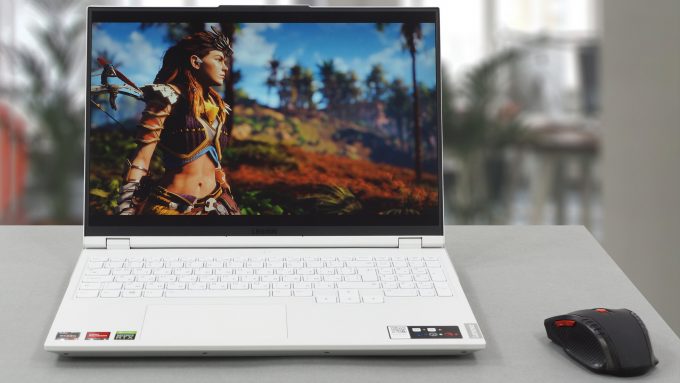 Ever since its announcement back in January, the Lenovo Legion 5 Pro (16″) has been the hotshot on the market. No matter if you are a gamer, content creator, or you need a device with huge performance, you should be excited about it.
Ever since its announcement back in January, the Lenovo Legion 5 Pro (16″) has been the hotshot on the market. No matter if you are a gamer, content creator, or you need a device with huge performance, you should be excited about it.
What you need to know before we start with the review is that first – it is neither a budget offering, nor it will completely obliterate your budget. Second – it is based on an AMD chipset with Ryzen 5000H processors, and Ampere graphics cards from NVIDIA. Thankfully, Lenovo is not one of the manufacturers that hide the specs of their GPUs, thus we know that the RTX 3060 in this configuration comes with a 130W TGP, while the RTX 3070 has a 140W one. This means you don’t get tuned-down versions of these graphics cards. However, we are going to test the performance and see how it fairs against some of its direct competitors like the MSI GP66 Leopard.
In addition to that, Lenovo has another ace up its pocket – the display. It comes with a 16:10 aspect ratio and a resolution of 2560 x 1600. Thankfully, its refresh rate is 165Hz, which, as we said in the ROG Zephyrus G15 GA503 review, is the sweet spot in the gaming ground.
You can check the prices and configurations in our Specs System: https://laptopmedia.com/series/lenovo-legion-5-pro-16/
Contents
Video Review
Specs Sheet
- HDD/SSD
- up to 4000GB SSD
- M.2 Slot
- 2x M.2 PCIe x4 slots See photo
- RAM
- up to 64GB
- OS
- Windows 11 Home, Windows 11 Pro, Windows 10 Home, No OS
- Battery
- 80Wh, 4-cell, 80Wh
- Body material
- Aluminum
- Dimensions
- 356 x 264.2 x 21.7 ~ 26.85 mm (14.02" x 10.40" x 0.85")
- Weight
- 2.45 kg (5.4 lbs)
- Ports and connectivity
- 1x USB Type-A
- 3.2 Gen 1 (5 Gbps), Sleep and Charge
- 3x USB Type-A
- 3.2 Gen 1 (5 Gbps)
- 1x USB Type-C
- 3.2 Gen 2 (10 Gbps), DisplayPort
- 1x USB Type-C
- 3.2 Gen 2 (10 Gbps), Power Delivery (PD), DisplayPort
- HDMI
- 2.1
- Card reader
- Ethernet LAN
- 10, 100, 1000 Mbit/s
- Wi-Fi
- 802.11ax
- Bluetooth
- 5.1
- Audio jack
- 3.5mm Combo Jack
- Features
- Fingerprint reader
- optional
- Web camera
- HD
- Backlit keyboard
- Microphone
- Dual Array Microphone
- Speakers
- 2x 2W, Nahimic 3D Audio
- Optical drive
- Security Lock slot
All Lenovo Legion 5 Pro (16″ AMD, 2021) configurations
What’s in the box?
Inside the package, you will find the mandatory paperwork, as well as a cutting board. Wait… this is actually the 300W power brick.
Design and construction
You can be forgiven if you think that Mercedes has made a laptop, as the Legion logo is very similar to that of the German car brand. It glows in either White or Blue, depending on the color of the system. With that said, you can purchase the device in either Stingray or Storm grey, which is essentially White and Grey. The laptop is made out of aluminum and has an anodized finish. Ultimately, it is built like a tank. Its body weighs 2.45 kilos and has a profile of 21.7-26.85mm, which is definitely not among the thinnest out there.
Thankfully, the lid can be opened with a single hand. However, unlike the Legion 5 and 7 from yesteryear, it can’t go down to a fully flat position. On the bright side, its bezels are thin all around, and the top one houses an HD camera with an electronic shutter (located on the right side of the device).
Overseeing the keyboard, there is the power button with an LED light in its center. So, what can we say about the keyboard then? Well, it is one of the best units on the market. Both for typing, and for gaming. It has a long key travel, clicky feedback, NumerPad, and huge Arrow keys. In addition to that, there are three options regarding the backlight. White, Blue, and 4-zone RGB. While we are here we have to mention the performance modes, which can be toggled by the combination of Fn + Q keys. When you press the combo, the power button LED changes color from Blue, to White, and then Red. Respectively, this means you get Quiet mode, Auto, and Extreme Performance.
Then, there is the touchpad. It is protected by the familiar Mylar surface used on 99% of Lenovo’s notebooks. Its gliding properties are not as good as those of the glass covers, but it’s still decent. As for tracking – it is pretty accurate.
Should you turn the laptop upside down, you will notice the ventilation grill, as well as the two speaker cutouts. As with every Legion out there at the moment, the hot air is pushed through four grills – two on the back, and one on each side.
Ports
Needless to say, this device is loaded with I/O. On the left side, you will find a USB Type-C 3.2 (Gen. 2) port, and an audio jack. On the right – you get a USB Type-A 3.2 (Gen. 1) port, and a camera shutter switch. So far, nothing impressive. The fun part, though, starts on the back. There, you get an RJ-45 connector, a USB Type-C 3.2 (Gen. 2) port, two USB Type-A 3.2 (Gen. 1) ports, an HDMI 2.1 connector, another USB Type-A 3.2 (Gen. 1) port, and the power connector.
Disassembly, upgrade options, and maintenance
Taking this laptop apart requires the removal of the bottom panel. To do so, undo all 10 Phillips-head screws, and pry the panel with a plastic tool.
Lenovo has equipped this device with an 80Wh battery pack.
In terms of storage, there are two slots in the form of M.2 PCIe x4 connectors. Additionally, you get two SODIMM slots for up to 64GB of DDR4 RAM in dual-channel mode.
As you can see, the cooling solution comprises a total of four heat pipes. Two of them are absolutely massive, while the other two are slightly thinner. Thankfully, Lenovo has dedicated one of the smaller heat pipes to the graphics memory.
Display quality
Lenovo Legion 5 Pro (16″) in the configuration we tested has a 165Hz WQXGA panel – MNG007DA1-1 (CSO1600). Its diagonal is 16 (40.6 cm), and the resolution is 2560 х 1600 pixels. The screen ratio is 16:10, and we are looking at a pixel density of – 189 ppi, and a pitch of 0.13 х 0.13 mm. The screen turns into Retina when viewed at distance equal to or greater than 46cm (18″) (from this distance one’s eye stops differentiating the separate pixels, and it is normal for looking at a laptop).
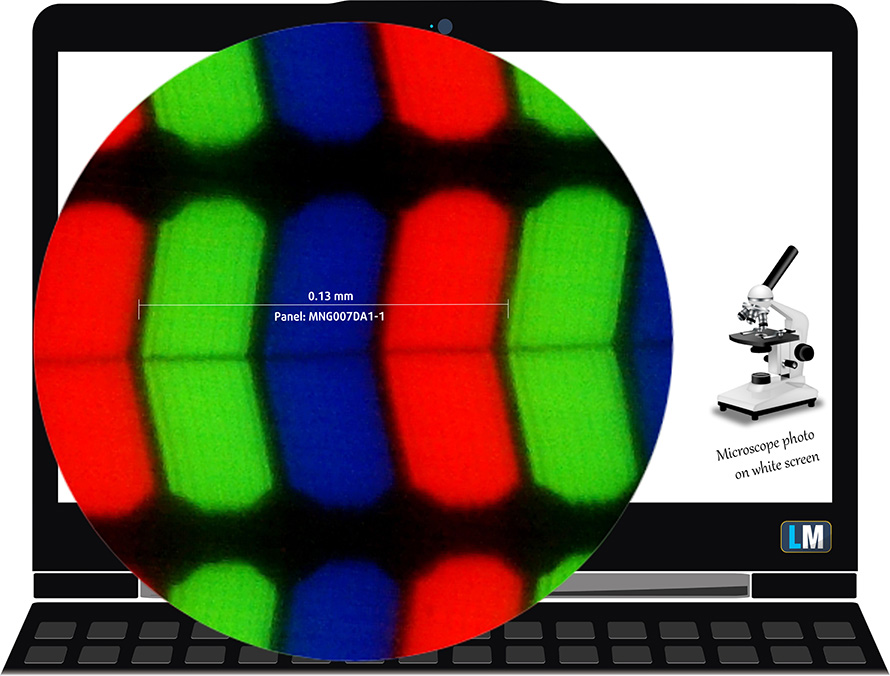
Viewing angles are excellent. We offer images at 45° to evaluate image quality.

We measured a maximum brightness of 506 nits in the middle of the screen and 488 nits as an average for the whole area, with a maximum deviation of 8%. The Correlated Color Temperature on a white screen is 6400K – slightly warmer than the optimal for the sRGB standard of 6500K.
In the illustration below you can see how the main display performs from a uniformity perspective. In other words, the leakage of light from the light source.
Values of dE2000 over 4.0 should not occur, and this parameter is one of the first you should check if you intend to use the laptop for color-sensitive work. The contrast ratio is good – 1140:1.
To make sure we are on the same page, we would like to give you a little introduction to the sRGB color gamut and the Adobe RGB. To start, there’s the CIE 1976 Uniform Chromaticity Diagram that represents the visible specter of colors by the human eye, giving you a better perception of the color gamut coverage and the color accuracy.
Inside the black triangle, you will see the standard color gamut (sRGB) that is being used by millions of people on HDTV and on the web. As for the Adobe RGB, this is used in professional cameras, monitors, etc for printing. Basically, colors inside the black triangle are used by everyone and this is the essential part of the color quality and color accuracy of a mainstream notebook.
Still, we’ve included other color spaces like the famous DCI-P3 standard used by movie studios, as well as the digital UHD Rec.2020 standard. Rec.2020, however, is still a thing of the future and it’s difficult for today’s displays to cover that well. We’ve also included the so-called Michael Pointer gamut, or Pointer’s gamut, which represents the colors that naturally occur around us every day.
The yellow dotted line shows Lenovo Legion 5 Pro (16″)’s color gamut coverage.
Its display covers 94% of the sRGB/ITU-R BT.709 (web/HDTV standard) in CIE1976.
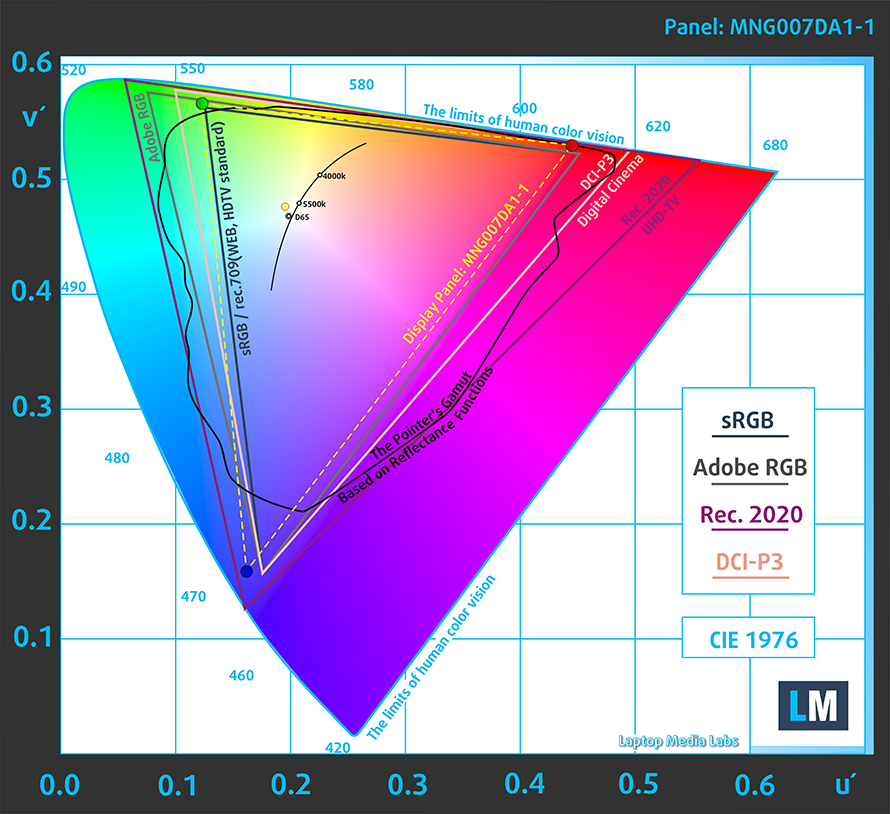
Our “Design and Gaming” profile delivers optimal color temperature (6500K) at 140 cd/m2 luminance and sRGB gamma mode.
We tested the accuracy of the display with 24 commonly used colors like light and dark human skin, blue sky, green grass, orange, etc. You can check out the results at factory condition and also, with the “Design and Gaming” profile.
Below you can compare the scores of Lenovo Legion 5 Pro (16″) with the default settings (left), and with the “Gaming and Web design” profile (right).
The next figure shows how well the display is able to reproduce really dark parts of an image, which is essential when watching movies or playing games in low ambient light.
The left side of the image represents the display with stock settings, while the right one is with the “Gaming and Web Design” profile activated. On the horizontal axis, you will find the grayscale, and on the vertical axis – the luminance of the display. On the two graphs below you can easily check for yourself how your display handles the darkest nuances but keep in mind that this also depends on the settings of your current display, the calibration, the viewing angle, and the surrounding light conditions.
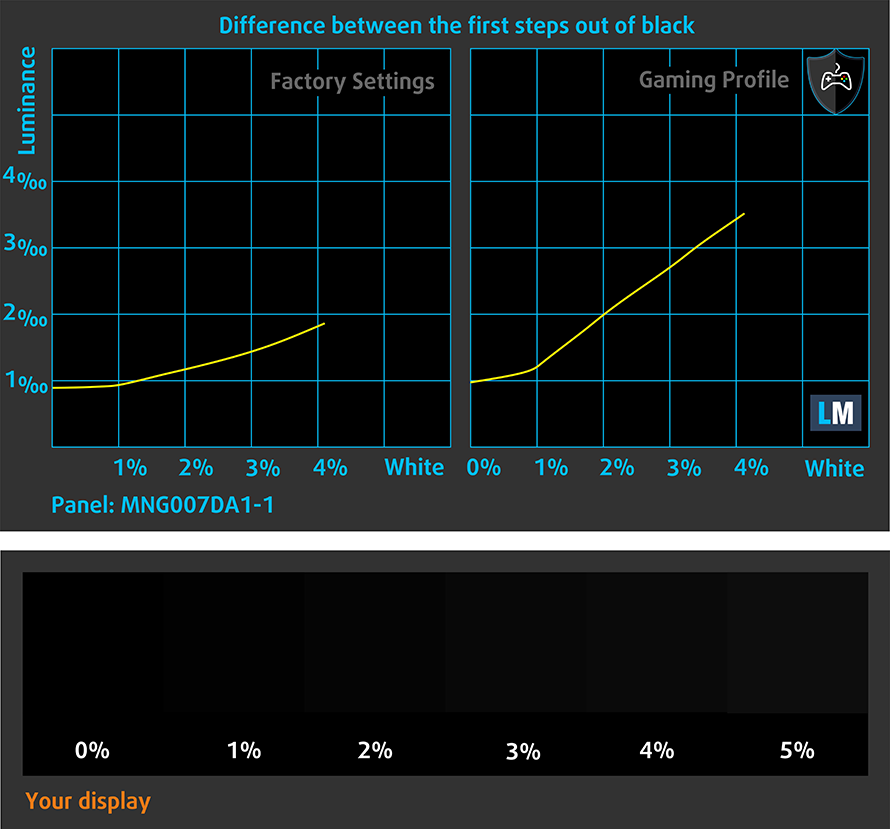
Response time (Gaming capabilities)
We test the reaction time of the pixels with the usual “black-to-white” and “white-to-black” method from 10% to 90% and vice versa.
We recorded Fall Time + Rise Time = 7 ms.
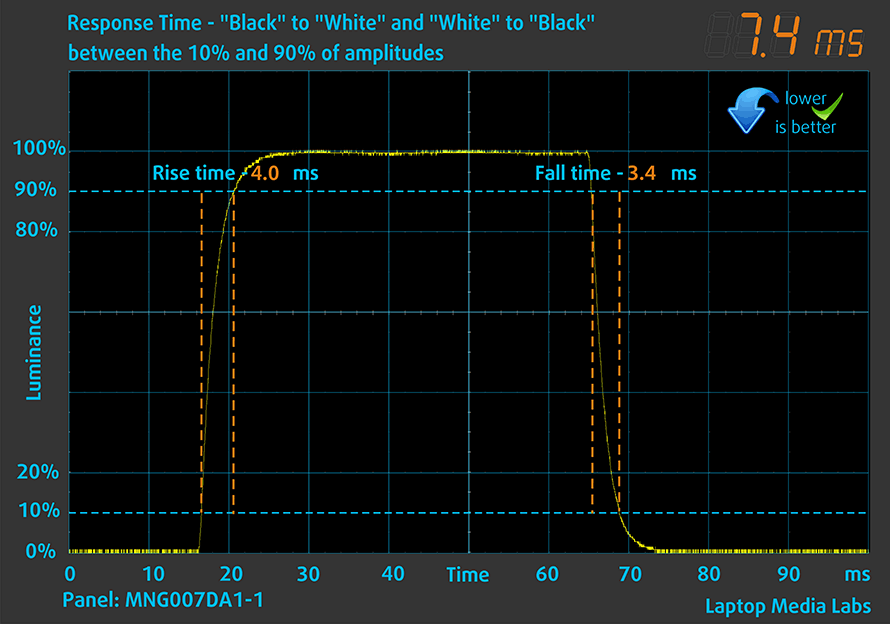
After that, we test the reaction time of the pixels with the usual “Gray-to-Gray” method from 50% White to 80% White and vice versa between 10% and 90% of the amplitude.

PWM (Screen flickering)
Pulse-width modulation (PWM) is an easy way to control monitor brightness. When you lower the brightness, the light intensity of the backlight is not lowered, but instead turned off and on by the electronics with a frequency indistinguishable to the human eye. In these light impulses, the light/no-light time ratio varies, while brightness remains unchanged, which is harmful to your eyes. You can read more about that in our dedicated article on PWM.
Lenovo Legion 5 Pro (16″)’s display doesn’t use PWM to adjust its brightness at any point. This means it is comfortable for long gaming sessions without harming your eyes in this aspect.

Blue light emissions
Installing our Health-Guard profile not only eliminates PWM but also reduces the harmful Blue Light emissions while keeping the colors of the screen perceptually accurate. If you’re not familiar with the Blue light, the TL;DR version is – emissions that negatively affect your eyes, skin, and your whole body. You can find more information about that in our dedicated article on Blue Light.
Buy our profiles
Since our profiles are tailored for each individual display model, this article and its respective profile package are meant for Lenovo Legion 5 Pro (16″) configurations with 16″ WQXGA IPS MNG007DA1-1 (CSO1600).
*Should you have problems with downloading the purchased file, try using a different browser to open the link you’ll receive via e-mail. If the download target is a .php file instead of an archive, change the file extension to .zip or contact us at [email protected].
Read more about the profiles HERE.
In addition to receiving efficient and health-friendly profiles, by buying LaptopMedia's products you also support the development of our labs, where we test devices in order to produce the most objective reviews possible.

Office Work
Office Work should be used mostly by users who spend most of the time looking at pieces of text, tables or just surfing. This profile aims to deliver better distinctness and clarity by keeping a flat gamma curve (2.20), native color temperature and perceptually accurate colors.

Design and Gaming
This profile is aimed at designers who work with colors professionally, and for games and movies as well. Design and Gaming takes display panels to their limits, making them as accurate as possible in the sRGB IEC61966-2-1 standard for Web and HDTV, at white point D65.

Health-Guard
Health-Guard eliminates the harmful Pulse-Width Modulation (PWM) and reduces the negative Blue Light which affects our eyes and body. Since it’s custom tailored for every panel, it manages to keep the colors perceptually accurate. Health-Guard simulates paper so the pressure on the eyes is greatly reduced.
Get all 3 profiles with 33% discount
Sound
Lenovo Legion 5 Pro (16″)’s stereo speakers produce a loud and crisp sound with good quality. Its low, mid, and high tones are clear of deviations. Additionally, the amplitude-frequency characteristics show an upsurge in the highs.
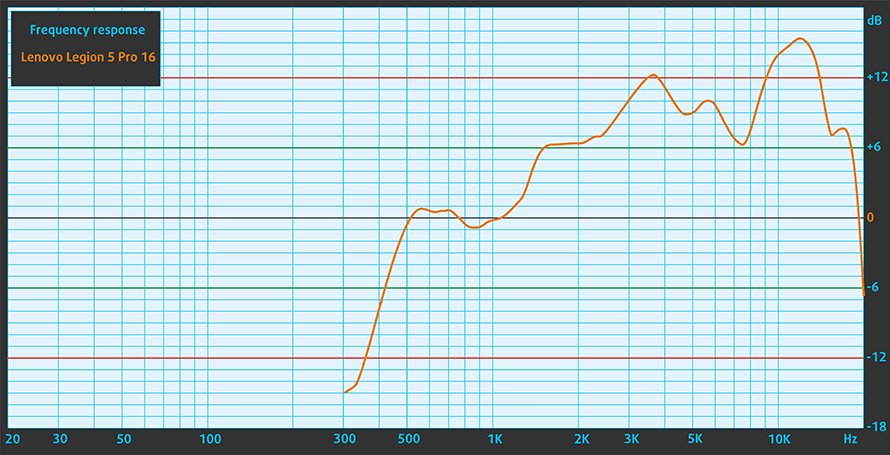
Drivers
All of the drivers and utilities for this notebook can be found here: https://pcsupport.lenovo.com/us/en/products/laptops-and-netbooks/legion-series/legion-5-pro-16ach6h/downloads/driver-list
Battery
Now, we conduct the battery tests with Windows Better performance setting turned on, screen brightness adjusted to 120 nits, and all other programs turned off except for the one we are testing the notebook with. This notebook’s 80Wh battery pack lasts for 7 hours and 16 minutes of Web browsing, and 6 hours and 27 minutes of video playback.
In order to simulate real-life conditions, we used our own script for automatic web browsing through over 70 websites.
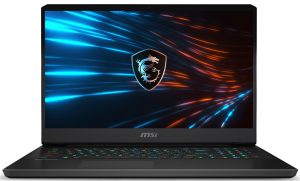
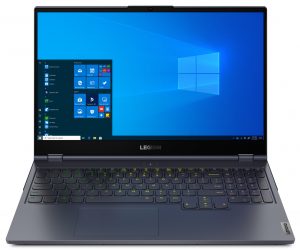
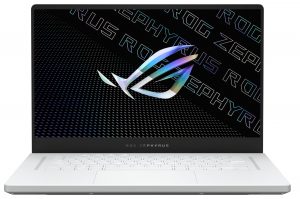
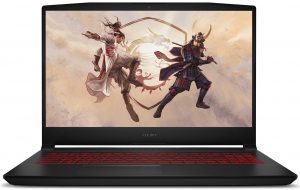
For every test like this, we use the same video in HD.




CPU options
As of the moment of writing this review, this device can be purchased with either the Ryzen 5 5600H or the Ryzen 7 5800H.
Results are from the Cinebench R23 CPU test (the higher the score, the better)
Results are from our Photoshop benchmark test (the lower the score, the better)
GPU options
Graphics-wise, you get the RTX 3060 (130W TGP), or the RTX 3070 (140W TGP). Some configurations are expected to come with the RTX 3050 Ti, as well.
Results are from the 3DMark: Time Spy (Graphics) benchmark (higher the score, the better)
Results are from the 3DMark: Fire Strike (Graphics) benchmark (higher the score, the better)
Results are from the Unigine Superposition benchmark (higher the score, the better)
Lenovo Legion 5 Pro (16" AMD, 2021) GPU variants
Here you can see an approximate comparison between the GPUs that can be found in the Lenovo Legion 5 Pro (16" AMD, 2021) models on the market. This way you can decide for yourself which Lenovo Legion 5 Pro (16" AMD, 2021) model is the best bang for your buck.
Note: The chart shows the cheapest different GPU configurations so you should check what the other specifications of these laptops are by clicking on the laptop’s name / GPU.
Results are from the 3DMark: Time Spy (Graphics) benchmark (higher the score, the better)
Results are from the 3DMark: Fire Strike (Graphics) benchmark (higher the score, the better)
Results are from the 3DMark: Wild Life (Graphics) benchmark (higher the score, the better)
Results are from the Unigine Superposition benchmark (higher the score, the better)
Gaming tests

| Far Cry 5 | Full HD, Normal (Check settings) | Full HD, High (Check settings) | Full HD, Ultra (Check settings) |
|---|---|---|---|
| Average | 118 fps | 111 fps | 106 fps |

| Rise of the Tomb Raider (2016) | Full HD, Medium (Check settings) | Full HD, Very High (Check settings) | Full HD, MAX (Check settings) |
|---|---|---|---|
| Average | 157 fps | 95 fps | 64 fps |

| Tom Clancy’s Ghost Recon Wildlands | Full HD, High (Check settings) | Full HD, Very High (Check settings) | Full HD, Ultra (Check settings) |
|---|---|---|---|
| Average | 96 fps | 84 fps | 56 fps |

| Shadow of the Tomb Raider (2018) | Full HD, Medium (Check settings) | Full HD, High (Check settings) | Full HD, Highest (Check settings) |
|---|---|---|---|
| Average | 112 fps | 107 fps | 77 fps |
Temperatures and comfort
Max CPU load
In this test we use 100% on the CPU cores, monitoring their frequencies and chip temperature. The first column shows a computer’s reaction to a short load (2-10 seconds), the second column simulates a serious task (between 15 and 30 seconds), and the third column is a good indicator of how good the laptop is for long loads such as video rendering.
Average core frequency (base frequency + X); CPU temp.
| AMD Ryzen 5 5600H (45W TDP) | 0:02 – 0:10 sec | 0:15 – 0:30 sec | 10:00 – 15:00 min |
|---|---|---|---|
| Lenovo Legion 5 Pro (16″) | 3.77 GHz (B+14%) @ 84°C | 3.79 GHz (B+15%) @ 89°C | 3.76 GHz (B+14%) @ 97°C |
The consistency of the clock speed of this processor during stress load is extraordinary. Eventually, the CPU was running at 97°C, which is not ideal.
Real-life gaming
| NVIDIA GeForce RTX 3060 | GPU frequency/ Core temp (after 2 min) | GPU frequency/ Core temp (after 30 min) | GPU frequency/ Core temp (Max Fan) |
|---|---|---|---|
| Lenovo Legion 5 Pro (16″) | 1803 MHz @ 76°C @ 129W | 1787 MHz @ 81°C @ 129W | – |
| MSI GP66 Leopard | 1863 MHz @ 72°C @ 124W | 1852 MHz @ 75°C @ 125W | 1849 MHz @ 69°C @ 127W |
| MSI GP76 Leopard | 1860 MHz @ 71°C @ 129W | 1857 MHz @ 73°C @ 128W | 1869 MHz @ 67°C @ 128W |
You can see that here, the Legion 5 Pro (16″) is just slightly behind its competitor – the MSI GP66 Leopard in terms of frequencies, as well as temperatures.
Gaming comfort
During the test, we were using the Extreme Performance setup, which resulted in high fan noise, and a pretty warm keyboard. Crucially, the WASD area remained cool.
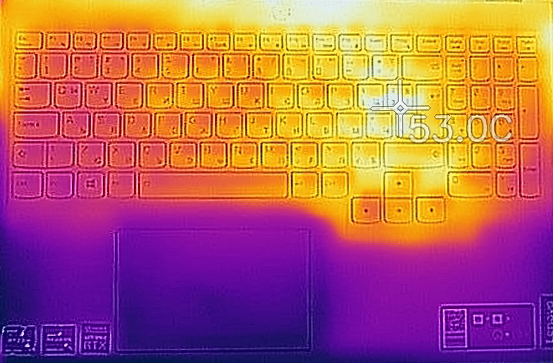
Verdict
 Lenovo was the latest manufacturer to hop on the 16-inch train. Personally, we feel that it is the perfect size for productivity or gaming on the go, as it is not too large to be carried around. Yet, it is larger than the more common 15.6-inch form factor.
Lenovo was the latest manufacturer to hop on the 16-inch train. Personally, we feel that it is the perfect size for productivity or gaming on the go, as it is not too large to be carried around. Yet, it is larger than the more common 15.6-inch form factor.
Specifically, the Legion 5 Pro (16″) has the potential to be one of the best in its category. This is mostly because of the high structural integrity, use of aluminum, and overall experience. Both the keyboard and the touchpad are exceptional, while the display is pretty much all you need for gaming and content creation.
Lenovo Legion 5 Pro (16″)’s IPS panel (MNG007DA1-1 (CSO1600)) has a 2560 x 1600 resolution with a 16:10 aspect ratio, wide viewing angles, high maximum brightness, and a good contrast ratio. Additionally, the display covers 94% of the sRGB colors, and its backlight doesn’t use PWM for brightness adjustment. It was good to see that with our Gaming and Web design profile, we were able to achieve standard matching color accuracy. As for the gamers, the pixel response times are very quick, which matches perfectly the 165Hz refresh rate of the panel.
Like many other notebooks, this one gives you the opportunity to connect the internal display directly to the dedicated graphics card. This means you can get everything out of it, as usual, the signal passes through the integrated graphics. However, it leads to poor battery life. When the “discrete graphics” is enabled from the BIOS menu, we got only 4 hours and 27 minutes of Web browsing, and 3 hours and 50 minutes of video playback. Then, we switched to “dynamic graphics”, and the results improved significantly. We got 7 hours and 16 minutes of Web browsing, and 6 hours and 27 minutes of video playback.
What we also found out about this device, is that it has a very impressive computational performance. And while the RTX 3060 in our case was pretty competitive, it performed slower than the same GPU with the same 130W TGP inside of the MSI GP66 Leopard.
Something that we were missing inside of the notebook was an SD card reader. Although the device has an abundance of ports, including 4x USB Type-A ports and two USB Type-C ones, there is no Thunderbolt certification because of the limits of the chipset.
Ultimately, there are some compromises you have to make when buying this laptop. However, we feel that there you can work around most of them, and the core package is good enough to be recommended.
You can check the prices and configurations in our Specs System: https://laptopmedia.com/series/lenovo-legion-5-pro-16/
Pros
- High TGP GPUs
- Strong aluminum chassis
- 2x M.2 PCIe slots, 2x RAM SODIMM slots in dual channel, Wi-Fi 6
- Covers 94% of the sRGB color gamut and has accurate color representation with our Gaming and Web design profile (MNG007DA1-1 (CSO1600))
- Snappy panel with quick response times (MNG007DA1-1 (CSO1600))
- High resolution and high maximum brightness (MNG007DA1-1 (CSO1600))
- HDR + G-Sync (MNG007DA1-1 (CSO1600))
- Has a ton of ports
- Great input devices
Cons
- No SD card
- Gets a bit warm under the bonnet
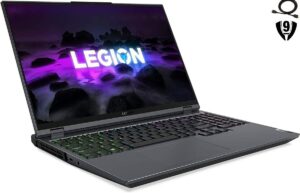
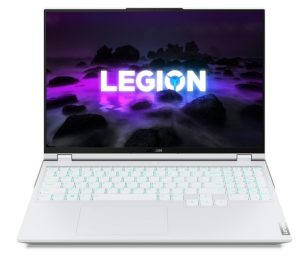




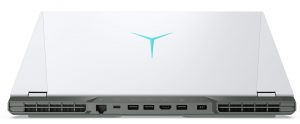
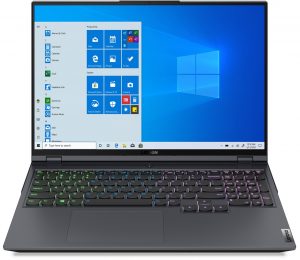
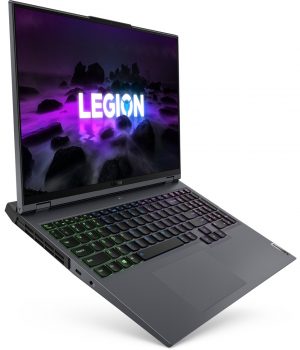
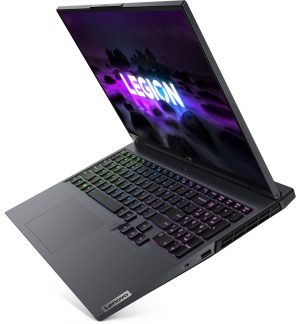

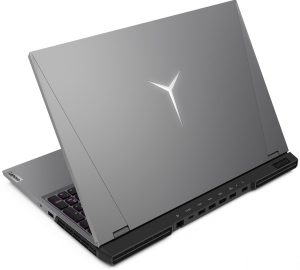
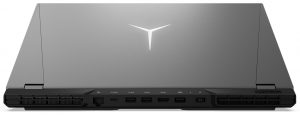
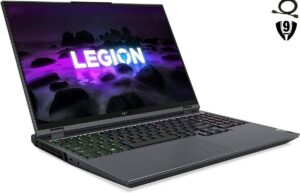
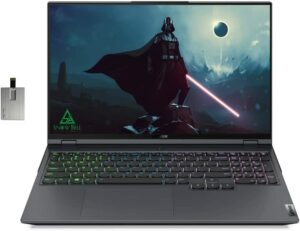

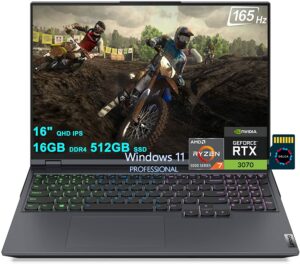
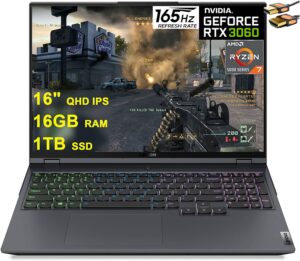
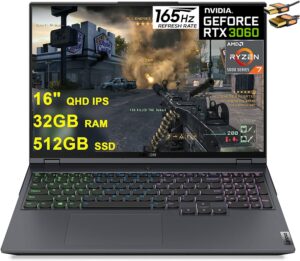
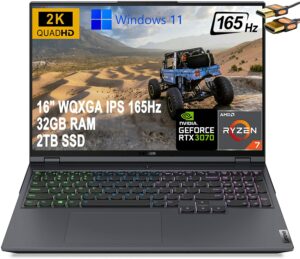
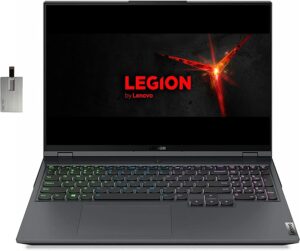
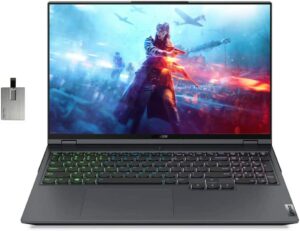
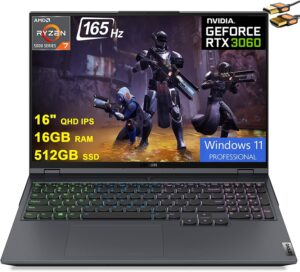
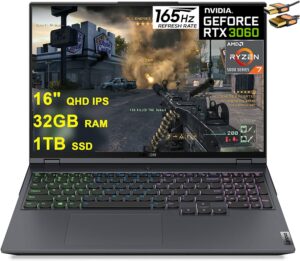
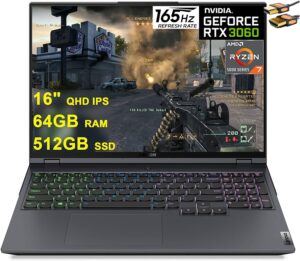
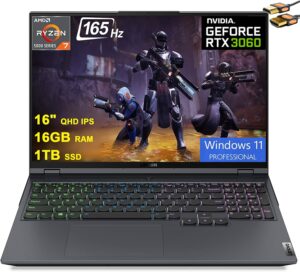
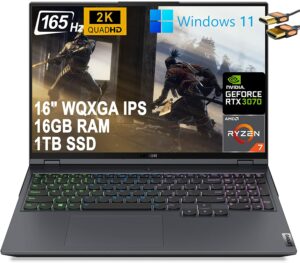
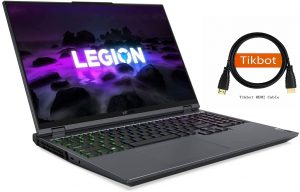
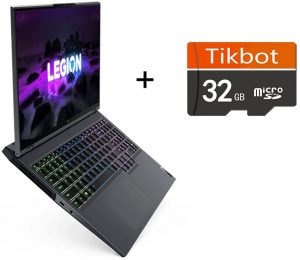
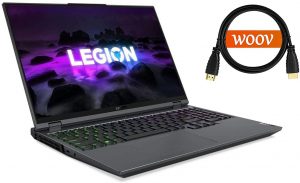
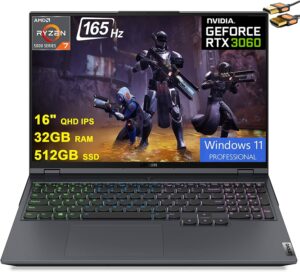
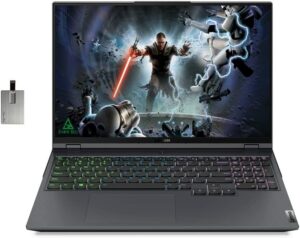
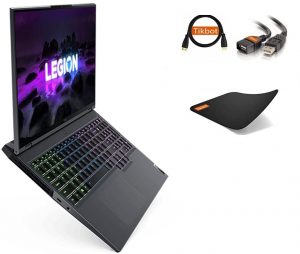
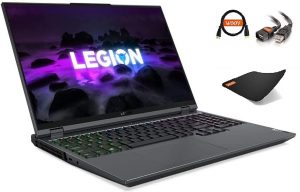
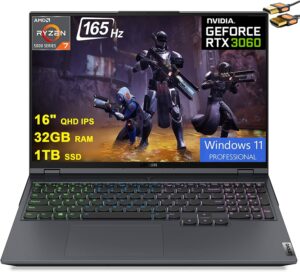
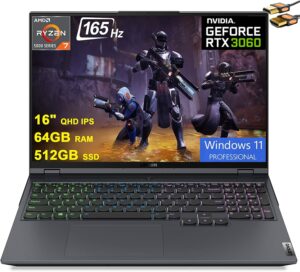
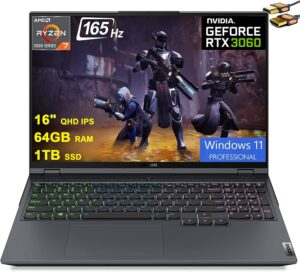
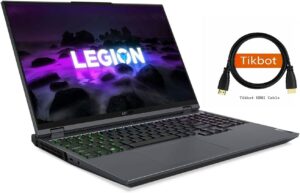
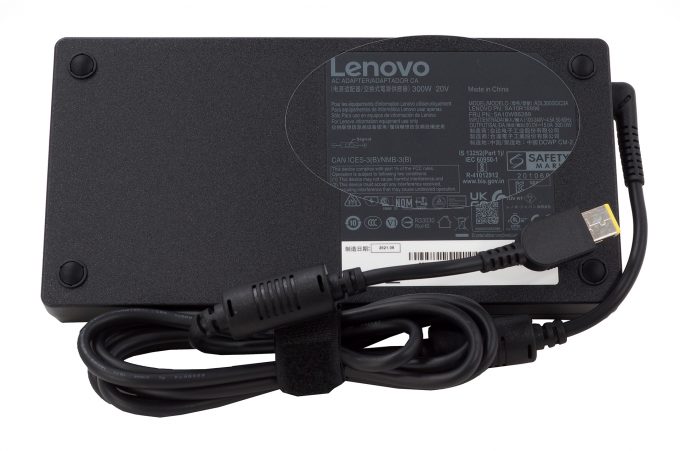
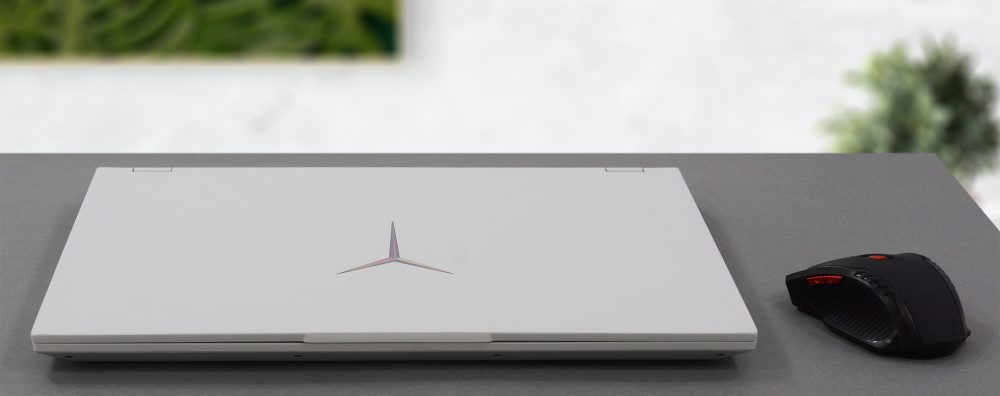

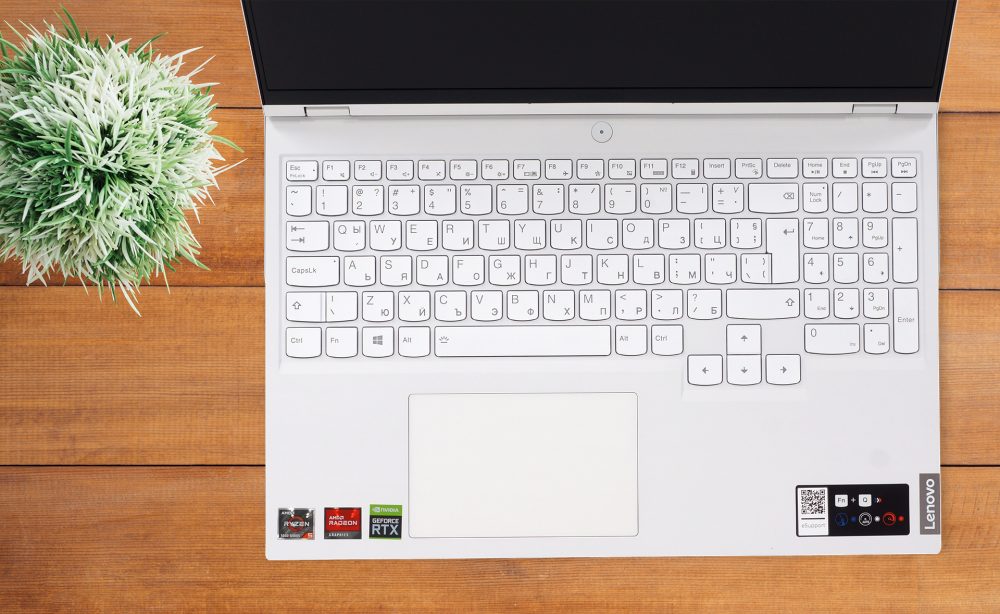
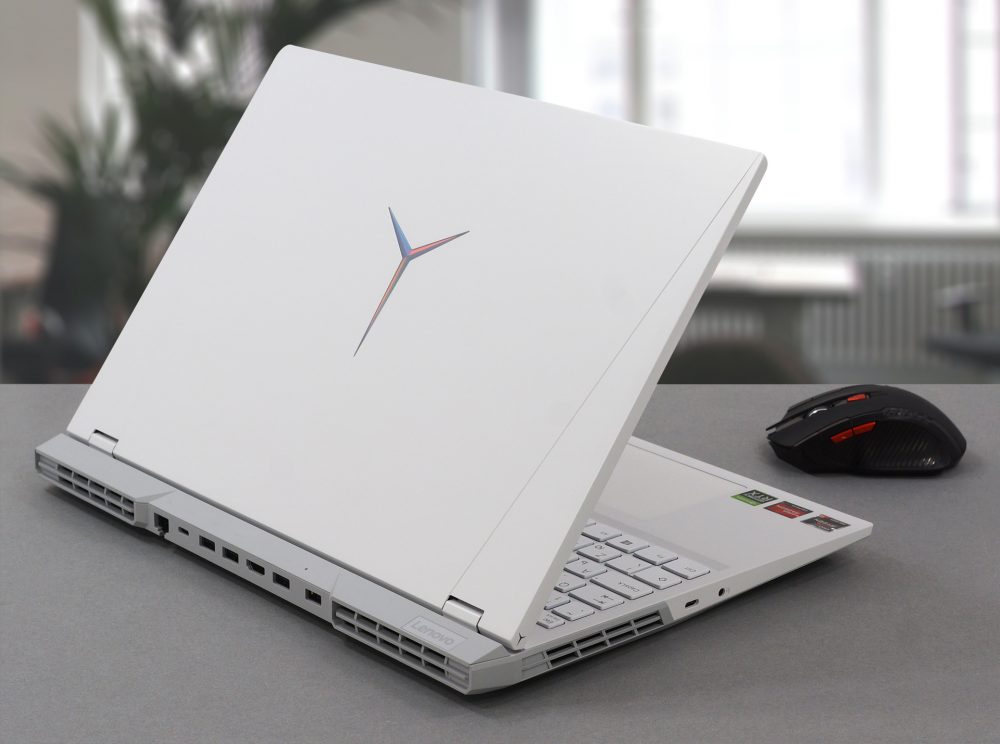
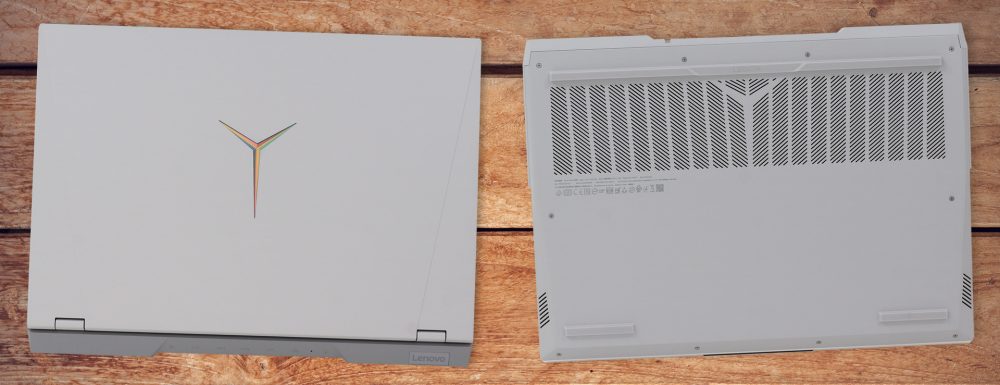



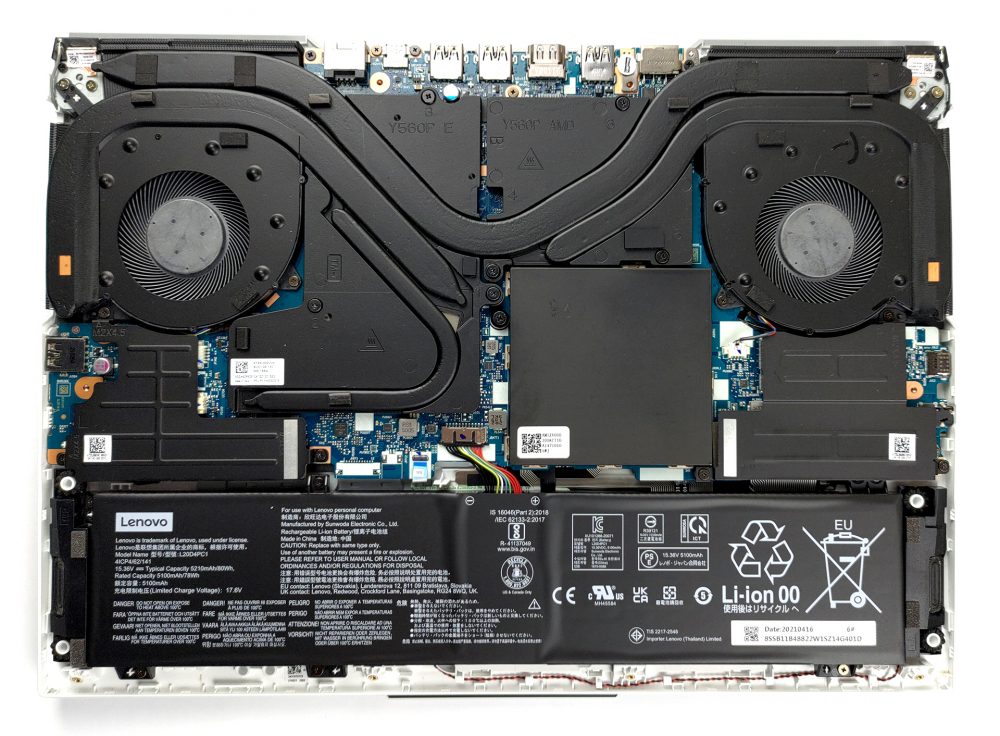

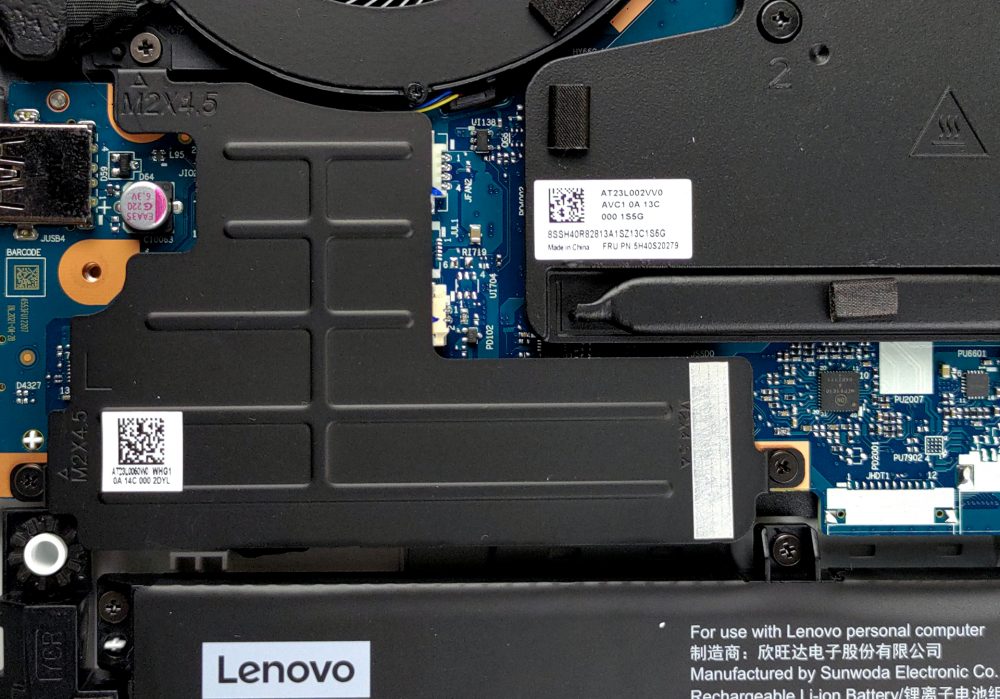

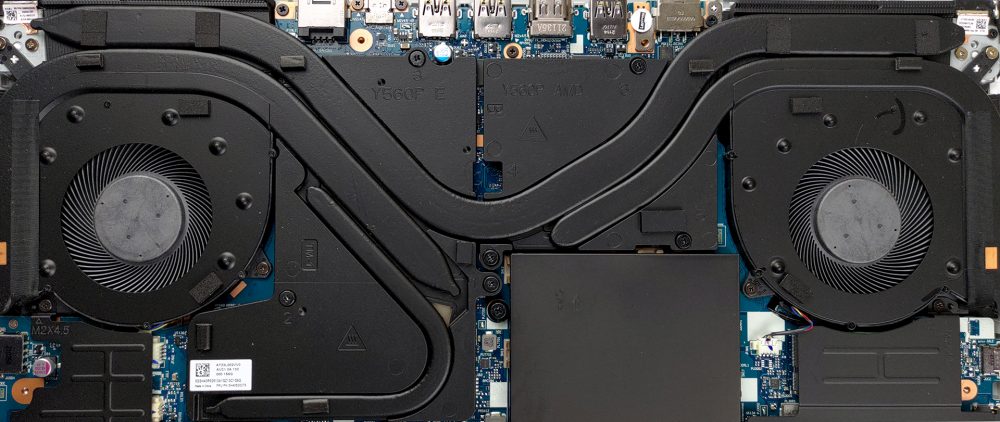
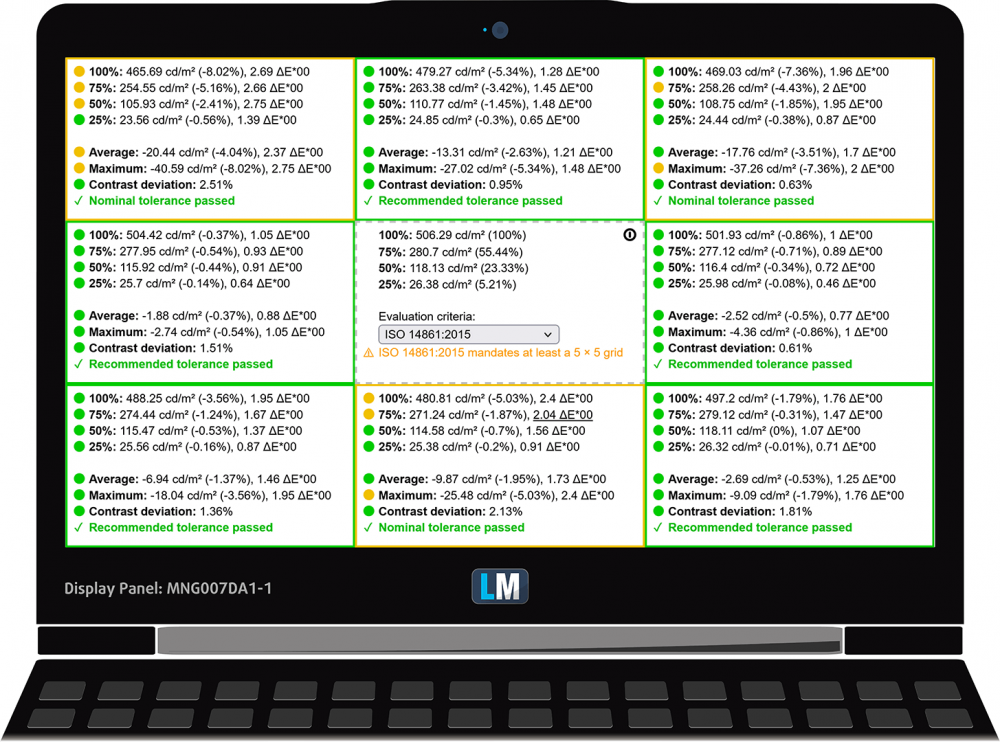

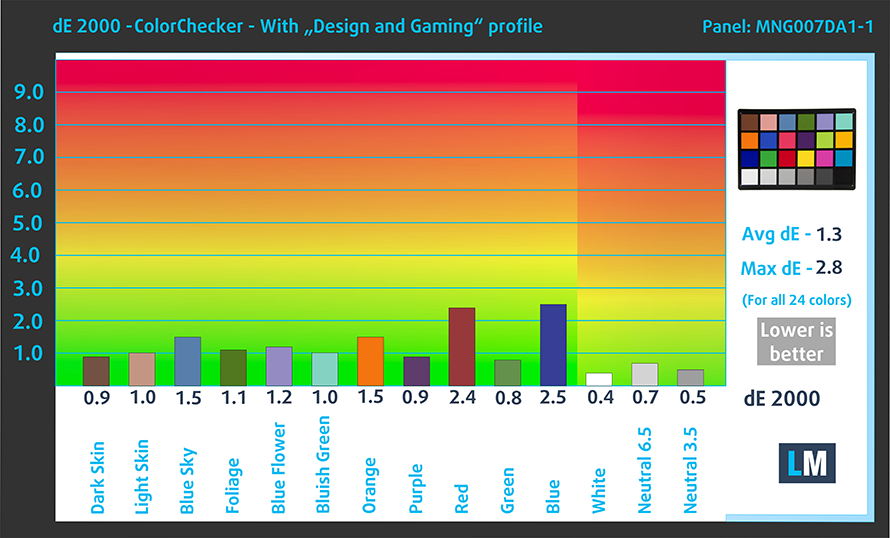

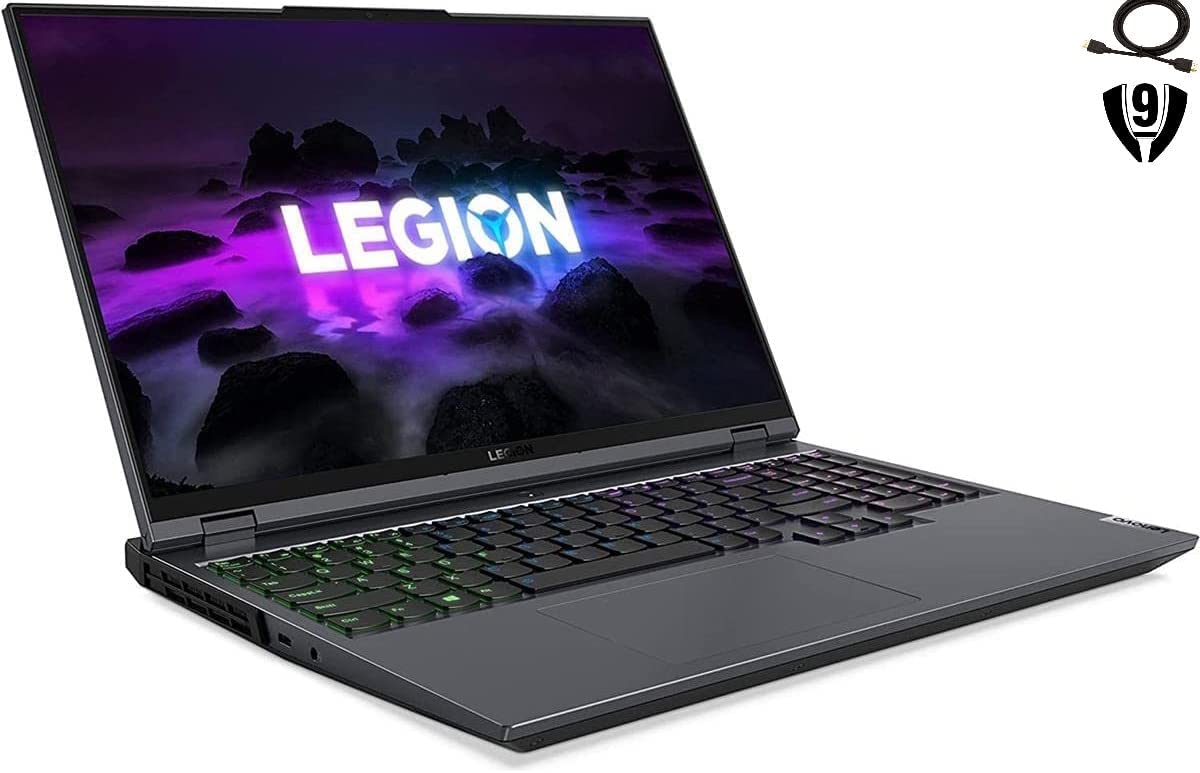
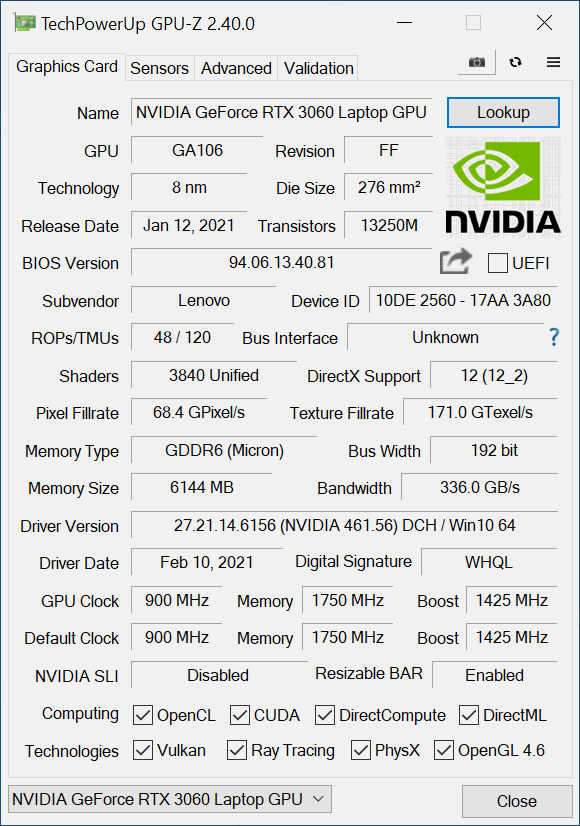








Are arrow keys causing any problems when typing? They are placed where right hand usually rest.